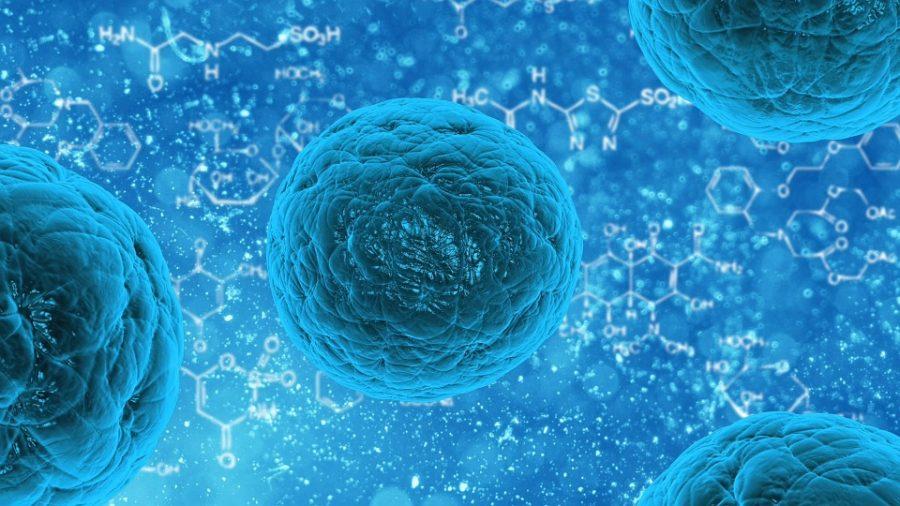Curing Alzheimer’s… One Neuron at a Time
Weekly Update
January 22, 2017
According to the Alzheimer’s Association, one in nine people over the age of 65 have been diagnosed with Alzheimer’s Disease in the United States. With such a high prevalence, scientists have been searching relentlessly for a treatment that will prevent the disease before it develops. Since its discovery in 1906 by Dr. Alois Alzheimer, the complex neurodegenerative disease has proven to be an immense challenge for doctors and families alike. The National Institute on Aging points out that there is most likely not one miracle drug to cure each neurological facet of Alzheimer’s. Current treatments include approaching one area of the disease at a time: for example, retaining memories, managing behaviors, and maintaining general mental function to delay the symptoms of the disease; but there is not one medicine that treats them all. At least, not yet.
The Alzheimer’s Association explains how the disease damages neurons, causing the brain’s crucial communication network to be destroyed. As the Association describes, “Neurons connect and communicate at synapses, where tiny bursts of chemicals called neurotransmitters carry information from one cell to another,” but Alzheimer’s prevents this network from functioning optimally, damaging fundamental cognitive skills along with it. As current treatments only target the symptoms of Alzheimer’s, current research efforts are focused on finding a medicine that can treat the core of the disease and prevent its development.
Researchers are now investigating therapies that target genetic, molecular, and cellular origins of the disease in order to prevent it from fully manifesting the brain. Ellen Johnson, Upper School Biology Teacher, agrees that “Neurodegenerative diseases present a complicated profile of symptoms over the course of many years, making a single generalized treatment difficult, if not impossible. Obviously the pathology being located in the brain presents additional challenges, requiring new technologies to monitor the progress of the disease and treatment as well. A cure has not yet been found, but not for lack of trying and I believe we should be optimistic that one may be found given the concerted effort applied to this disease.” This very optimism is infectious in the medical community as hundreds of research teams are meticulously searching for this kind of cure, and one thinks he may have found it.
Gong Chen, researcher at Penn State, has experimented with 14 year-old mice, the cognitive equivalent to a 60 year-old human. He found that he could inject a gene directly into the brain which can reverse the effects of the disease by creating newly activated, high functioning neurons. Despite possible medical breakthroughs in this field, Hailey Dicindio ’18 comments, “Although I do not know much about it, I do feel as if it could be a risky business. Playing with genes, especially in the brain, sounds like a difficult and possibly dangerous thing to do,” but she also acknowledges that if successful, this new treatment would be “an incredible advancement, and if it works I think it will be another indicator of the human ability of problem solving and logical thinking. It would make so many people much happier as well, and since we only get one life I think that would be amazing.”
This is just one example of the many researchers who are collecting convincing evidence for their treatments as well. Possible therapies for the future include immunization, drug therapy, physical training, cognitive training, and many more we are yet to discover! Chris Wallace ’17 believes that “This could impact the future of medicine significantly due to having a much better understanding of not only Alzheimer’s disease, but how the brain works altogether.” Despite potential medical discovery across many fields, as Wallace says, there remains an ethical discussion regarding this kind of medical research. Johnson, also the faculty sponsor of the Ethics Club, mentions that “there is always a question of what diseases should get the research dollars…there is no such thing as an unimportant disease, but there is a concept of “orphan diseases” – those that are not investigated as rigorously as a more common disease such as Alzheimer’s. So that brings us to why AD is more common – some people think it is the negative side effect of increased life expectancy,” meaning that due to the more advanced medicines we have now, people are more likely to live to an age when diseases like Alzheimer’s occur.
We owe it to the 5.4 million individuals in America with Alzheimer’s to extend the gift of long life to that of the mind as well. DiCindio parallels the hopes of the Wilmington Friends community, that “Science always seems to be updating and improving, just in daily articles that are projected in newspapers and on the web. We have come so far already, and there is always room for improvement.” From the lab to the general public, some of the best minds in medicine are pioneering new ways to treat this disease: not just one neuron at a time, but them all.































